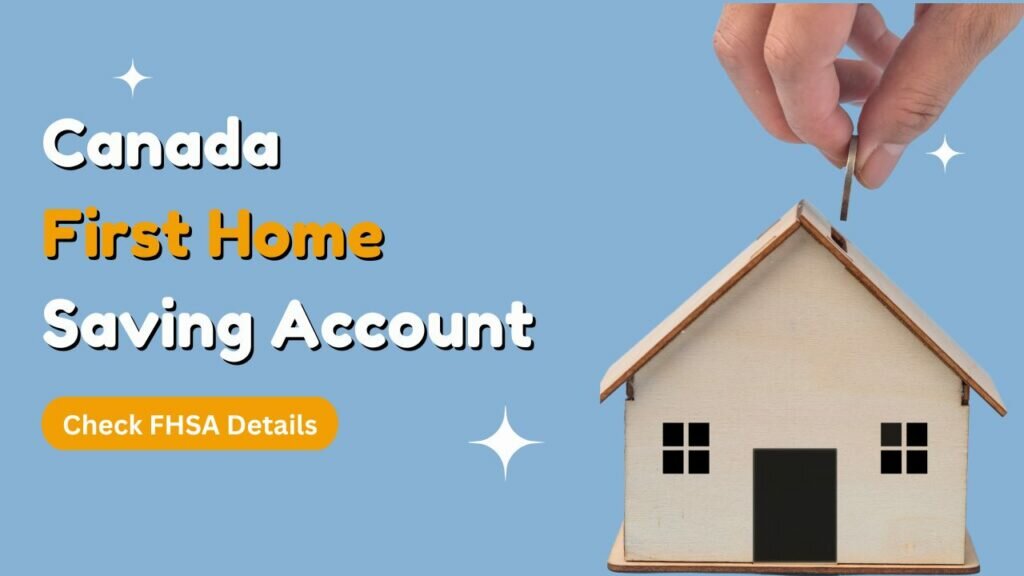Canada’s First Home Savings Account (FHSA) is a new government initiative designed to make it easier for first-time home buyers to save for a down payment. It combines the features of both a Registered Retirement Savings Plan (RRSP) and a Tax-Free Savings Account (TFSA), allowing contributions to grow tax-free. Additionally, withdrawals made to purchase a first home are not taxed.
Understanding the Canada FHSA

Canada’s First Home Savings Account (FHSA) is a financial initiative designed to assist first-time homebuyers in saving for their dream homes. In this guide, we’ll explore the eligibility criteria for opening an FHSA, the simple steps, the types of FHSAs available, and when it’s advisable to close your account. Whether you’re a prospective homebuyer or simply curious about this savings option, read on to discover the key details you need to know.
Eligibility for the Canada First Home Savings Account
To open a Canada First Home Savings Account (FHSA), you must meet the following eligibility criteria:
- Age: You must be at least 18 years of age at the time the account is opened.
- Age Limit: You should not be more than 71 on December 31 of the year the account is opened.
- Residency: You must be a resident of Canada.
- First-Time Home Buyer: You need to be a first-time home buyer. This means that you must not have owned a home you lived in as your principal residence at any time during the year the account is opened or during the four preceding years.
-
- Exception: In certain provinces and territories, the legal age at which an individual can enter into a contract (including opening an FHSA) is 19.
- Non-Resident Special Rules: If you become a non-resident of Canada after opening an FHSA, special rules will apply.
Types of Canada First Home Savings Accounts
Three types of Canada First Home Savings Accounts (FHSAs) can be offered:
- Depositary FHSA: This type holds money, term deposits, or guaranteed investment certificates (GICs) and is offered by financial institutions such as banks and credit unions.
- Trusteed FHSA: This FHSA holds qualified investments such as money, term deposits, GICs, government and corporate bonds, mutual funds, and securities listed on a designated stock exchange. Trust companies manage it.
- Insured FHSA: An insured FHSA is an annuity contract licensed annuity providers offer.
You can choose the type of FHSA that aligns with your investment preferences and financial goals.
How to Open a Canada First Home Savings Account
Opening a Canada First Home Savings Account involves the following steps:
- Determine Eligibility: Before opening an FHSA, meet the above eligibility criteria.
- Choose an FHSA Issuer: You can open an FHSA through an FHSA issuer, such as a bank, credit union, or trust or insurance company.
- Provide Required Information: To open the account, you will need to provide the following information to your chosen FHSA issuer:
- Your social insurance number
- Your date of birth
- Any supporting documents your issuer may need to certify that you are a qualifying individual
- Ensure Accuracy: Providing correct information is crucial. If it is later determined that you provided incorrect information, the registration of your FHSA may be revoked, leading to tax consequences.
- Designate a Beneficiary: When opening your FHSA, you may designate a beneficiary for your account.
When to Close a Canada First Home Savings Account
Your maximum participation period for an FHSA begins when you open your first FHSA and ends based on the earliest of the following events:
- The 15th anniversary of opening your first FHSA.
- You turn 71 years of age.
- The year following your first qualifying withdrawal from your FHSA.
To avoid unintended tax consequences, closing all of your FHSAs before your maximum participation period ends is advisable.
Suppose you have a property in your FHSA by the end of your maximum participation period. In that case, you can directly transfer it into your RRSPs or registered retirement income funds (RRIFs) on a tax-deferred basis. However, withdrawing property as a taxable withdrawal requires reporting it as income on your income tax return.
After the death of the last FHSA holder, all FHSAs should be closed within the exempt period.
Please note that these details are based on the information provided and may be subject to change. It’s important to consult with an FHSA issuer and review the latest guidelines and regulations when considering opening or closing an FHSA.